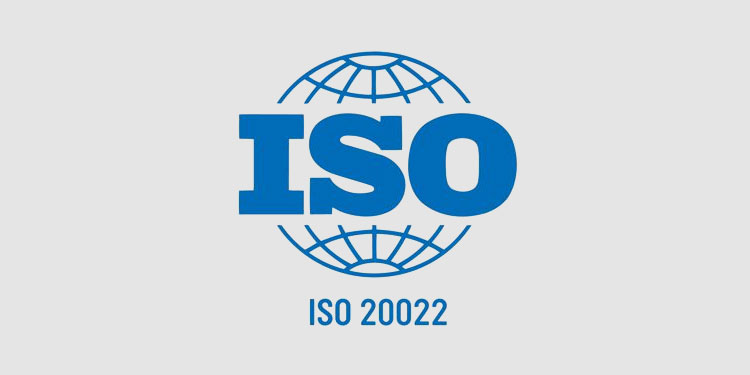ISO 20022 is an ISO standard for electronic data interchange between financial institutions.
Simply put, it is an emerging global standard for sending payment instructions between local, regional, and international financial institutions.
The financial standard defines building blocks and design patterns for the development of payment messages through a common platform methodology, process, and repository with a maintenance process for the repository content.
The standard covers financial information transferred between financial institutions that includes payment transactions, securities trading and settlement information, credit and debit card transactions, and other financial information.
In various market structures, the standardization approach establishes market guidelines for the exchange of financial data among different monetary institutions. The resulting models, derived messages, and patterns are published and stored by the ISO 20022 Financial Repository.
In this flexible framework, members are allowed to define and expand their message sets. They do this according to a business syntax that has been agreed upon internationally.
Even though the international financial institutions have reached a consensus on a standard for financial transactions by means of ISO 20022, the technical development of a default mode of operation is still not concluded.
Finding common ground with a single financial standard among network participants and countries with a wide range of diverse existing systems is quite the task.
Since 2016, network members have formed separate regional task forces to come up with message guidelines for high-value and cross-border payment systems, reporting, and others in a step towards achieving consensus.
These market practice groups have regular meetings to define the preferences of local institutions and balance them with the international requirements.
The ISO 20022 Migration Process
ISO20022 has already been implemented for high-value payments systems (HVPS) and instant payment markets in countries that have modernized their payment infrastructures, such as China, India, Australia, the US, Canada, and Singapore.
From 2021-to 2025, Around 25 more HVPS systems will embrace ISO 20022
ISO 20022 Benefits
The global implementation of ISO20022 so far has been promising. It has the power to possibly change the world’s current payment services. This will, in turn, bring more significance to financial institutions.
Context-sensitive data is contained in any payment instruction that complies with ISO 20022. These files contain extended remittance information and structured data to describe and identify the parties involved in the transaction clearly. A greater possibility of multinational payment is created in the payment industry when transaction management is combined with rich data formats.
Interoperability is greatly improved through the ISO 20022’s ability to exchange and utilize information without restrictions, increasing operational efficiency among network participants handling cross-border bank flows. When every participant uses the same technical standards, a similar integration method can be used every time a new participant is added.
As the marginal cost of connecting more participants with different technical requirements is lower, financial companies also increase their implementation efficiency.
The extensible language and external codes used in ISO 20022 can be instrumental in increasing the motivation of complying with regulations. This is especially true when it comes to monitoring, payments, and functions report.
The standard will have a positive impact on banks
It will enable improved compliance, enhanced sanctions screening, anti-money laundering, and fraud detection. With lesser false positives the processes involved should be even more effective because structured address information is used.
The financial standard also offers comprehensive end-to-end transaction management for reconciliation references that can be automatically scanned to generate invoices, reports, and forecasts, enabling banks and businesses to automate routine tasks.
Implementation
Implementers of the ISO20022 do not find that much of a challenge with consolidating the worldwide roadmap. Rather, the complexity lies in tailoring the strongest implementation strategy to secure the most benefits and mitigate the risks.
More opportunities for innovation and a better response to changes in the industry will be provided because of the high level of flexibility provided by the ISO 20022.
Banks need to leverage the entire benefit of this standard with their business models to be able to maximize the market offerings returns they get.
